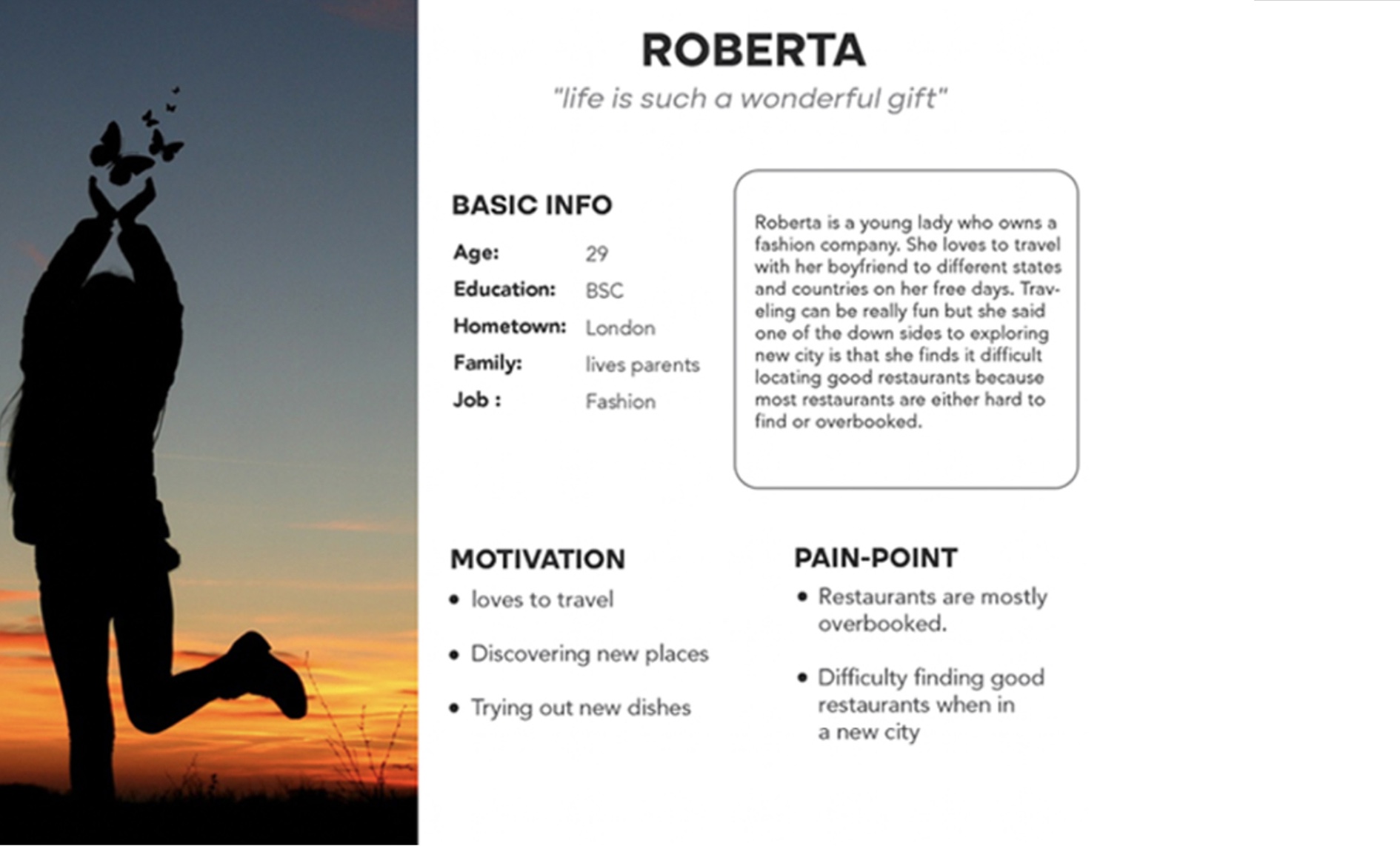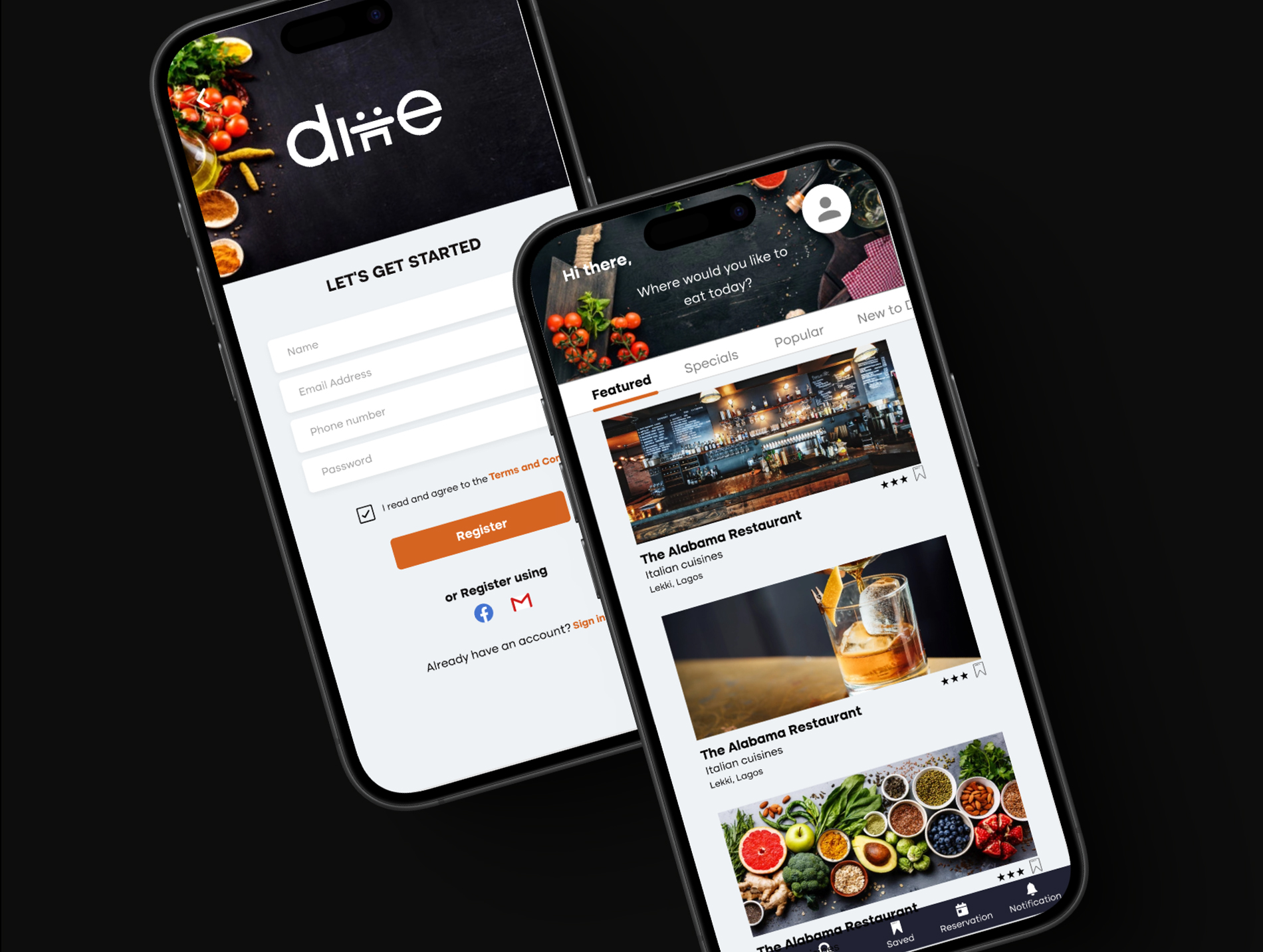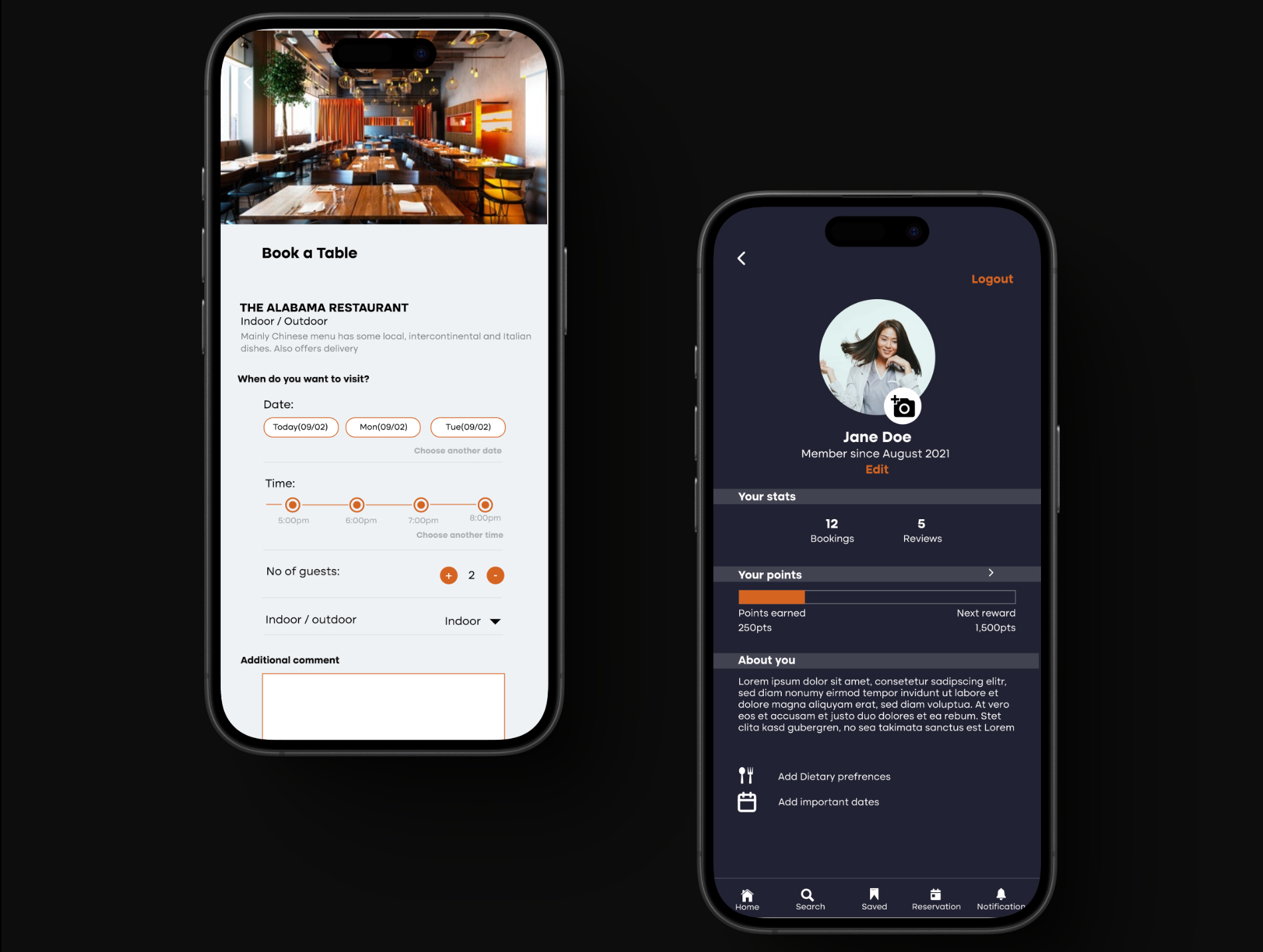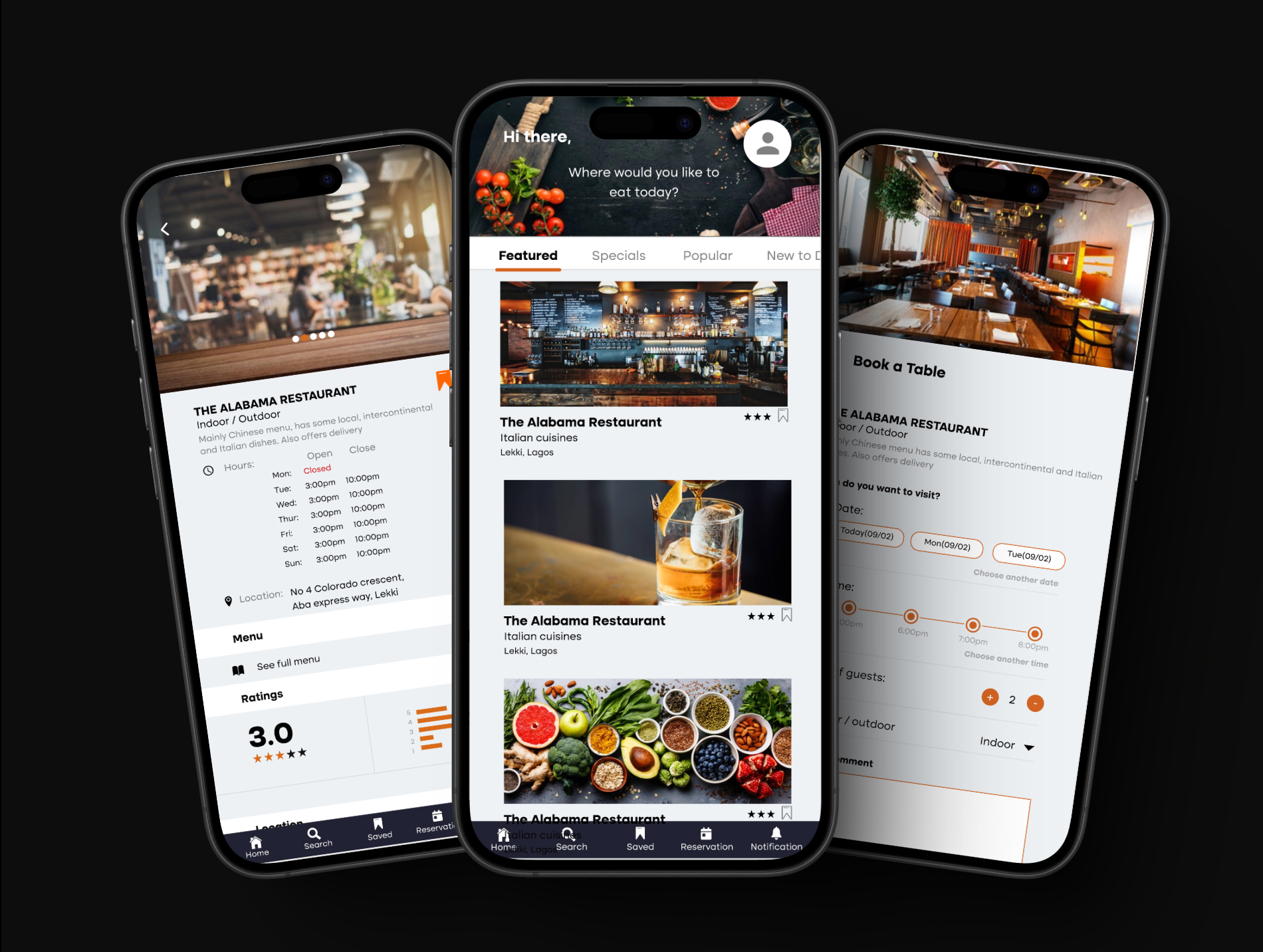Dine
Redefining the Dining Experience
The Dine App was developed to transform the way users discover and reserve dining experiences, offering a seamless platform that connects restaurants with diners. Unlike traditional methods, the app simplifies reservation processes while catering to individual dining preferences. Inspired by the need for more personalized dining options, Dine is tailored for food enthusiasts who seek convenience, customization, and a superior user experience.
Visual Designer, UX Designer, UX researcher
Despite the popularity of dining apps, users often face:
Limited Personalization: Existing platforms fail to cater to specific dietary preferences and restaurant criteria.
Clunky Reservation Processes: Many apps have overly complicated booking systems.
Lack of Transparency: Users struggle with incomplete information about restaurant availability and dining options.
Disconnected Dining Experience: There’s a gap between booking a table and providing a truly personalized dining journey.
The challenge was to design a platform that delivers a seamless, personalized, and transparent dining experience from start to finish.
Using the competitive analysis method, I benchmarked Dine against OpenTable, a leading dining app. Key findings included:
- Users preferred apps that provided tailored restaurant recommendations.
- Transparency regarding menu options, dietary accommodations, and real-time availability was a critical requirement.
- A simplified and visually appealing interface enhanced user trust and engagement.
Based on this research, I developed a user journey map highlighting pain points during the reservation process and a persona to represent the app’s target audience.


- Balancing Simplicity and Feature-Richness: Ensuring the app was feature-packed without overwhelming users.
- Accurate Recommendations: Developing an algorithm that effectively matches users with restaurants based on preferences.
- Real-Time Updates: Ensuring smooth integration with restaurant systems for accurate availability tracking.
- Competitive Differentiation: Designing unique features that set Dine apart from established competitors like OpenTable.
The Dine App introduces innovative features that address the identified challenges:
Personalized Recommendations
Users receive tailored restaurant suggestions based on their preferences, dietary needs, and location, e.g. A vegetarian user can instantly find restaurants offering curated plant-based menus.
Streamlined Reservations
A simplified three-step process for booking a table ensures a smooth user experience. e.g Users can select a restaurant, pick a time, and confirm their reservation in less than a minute.
Dynamic Availability Display
Real-time updates on table availability reduce user frustration and improve transparency. e.g Users see instantly when a table for two becomes available at a popular restaurant.
Seamless Dining Experience
The app bridges the gap between booking and dining by offering digital menus, wait time updates, and post-dining feedback options. e.g A user receives a notification when their table is ready, avoiding unnecessary waits.



This project underscored the importance of user-centered design and competitive research in creating standout digital solutions. By addressing gaps in existing dining platforms, Dine offers a tailored and seamless experience that enhances user satisfaction and loyalty. It reaffirmed my belief in the value of empathetic design in solving real-world problems.
Integrate Recommendation System
- Introducing machine learning to provide even more precise restaurant suggestions based on user behavior and preferences.